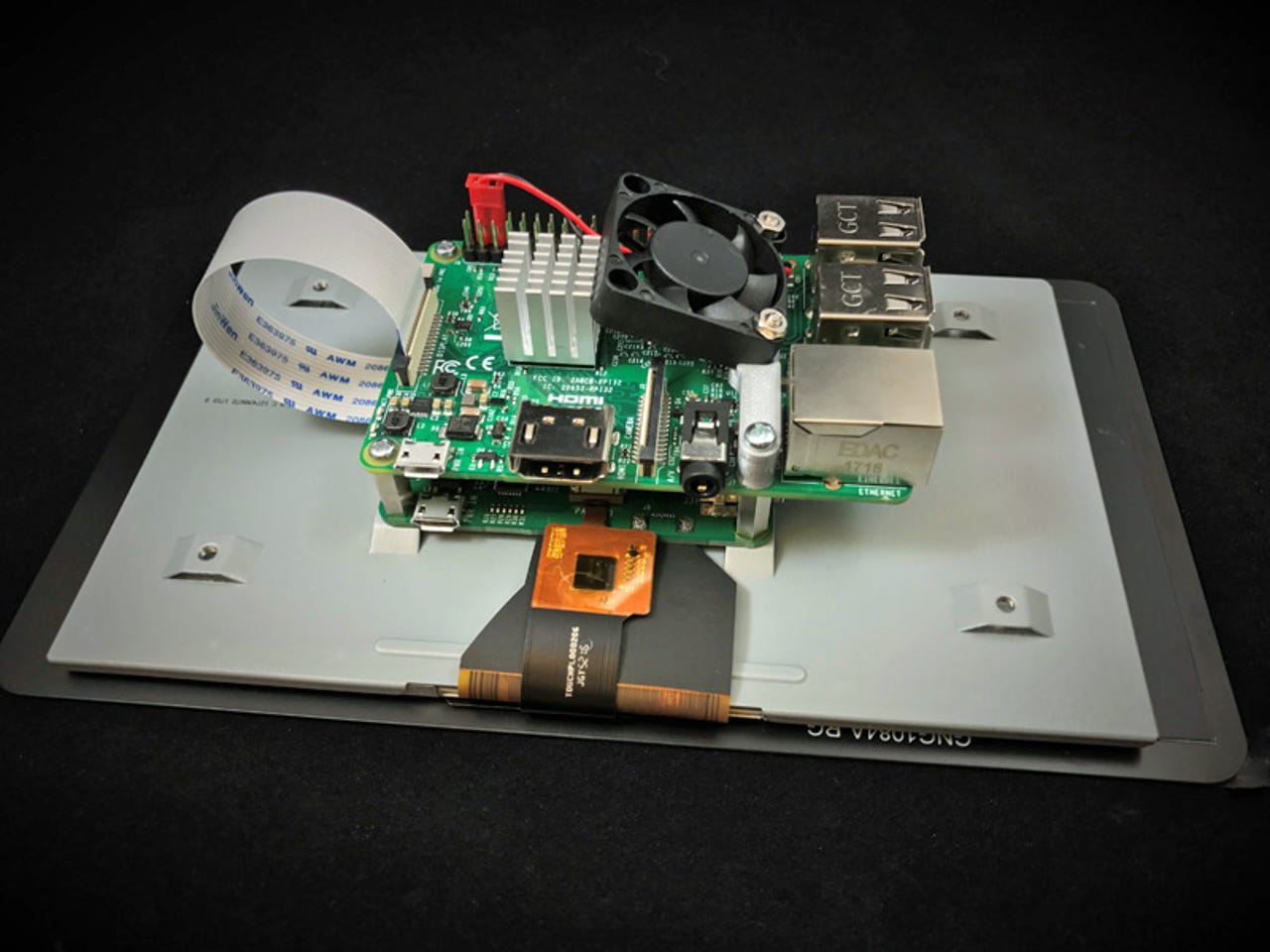Raspberry Pi: Microsoft comes up with a cool idea to stop it overheating


Microsoft Research offers up a fan mount for the Raspberry Pi 7-inch touch display.
A team at Microsoft Research that is working on shrinking image recognition and AI models to run on the Raspberry Pi has come up with a novel way to stop their Raspberry Pi 3 overheating when running very processor intensive workloads
The Raspberry Pi 3 disables overclocking or shuts down completely when the ARM CPU reaches 85 degrees Celsius to protect itself, causing problems for the team trying to run complex machine learning models on the tiny device.
Normally the Raspberry Pi 3 doesn't need a fan, but because some intensive workloads trigger this self-protection mechanism, Adafruit offers a cheap and tiny 5 volt fan (slightly larger than a quarter) to mount on the developer board.
Microsoft Research principal researcher Ofer Dekel explains in a tutorial that a heatsink alone won't do the trick since it doesn't cool the processor.
"Some cooling kits for the Raspberry Pi include heatsinks for the other components, but these infra-red images suggest that we should really focus on cooling the processor," the researchers said.
And while the Adfruit fan can be mounted directly on top of the Raspberry Pi's CPU, this isn't optimized for his setup, which is attached to the Raspberry Pi 7-inch touchscreen display.
The "secret ingredient" is a 3D printable fan mount he designed that allows him to screw the Adafruit cooling fan directly into the standoffs that come with the 7-inch display. As shown, the fan is positioned at an angle, rather than flat, pointing directly on to the CPU.
"We've seen quite a few recommendations to cool the Pi using only a heatsink, without a fan. In our experience, using a heatsink without a fan is insufficient. To demonstrate this, we stress tested the Pi by running all four cores at 100% and measured the processor temperature as it heats up," the researchers said.
Dekel's tests (below) show that the combination of heatsink and fan keeps the Raspberry Pi 3 at below 50 degrees Celsius when running all four cores at 100 percent for 12 minutes. With a heatsink alone it quickly reaches 75 degrees.
"The x-axis represents time in seconds and the y-axis represents the processor temperature in Celsius. The measurement starts with the idle processor temperature, and the stress test begins after 20 seconds."